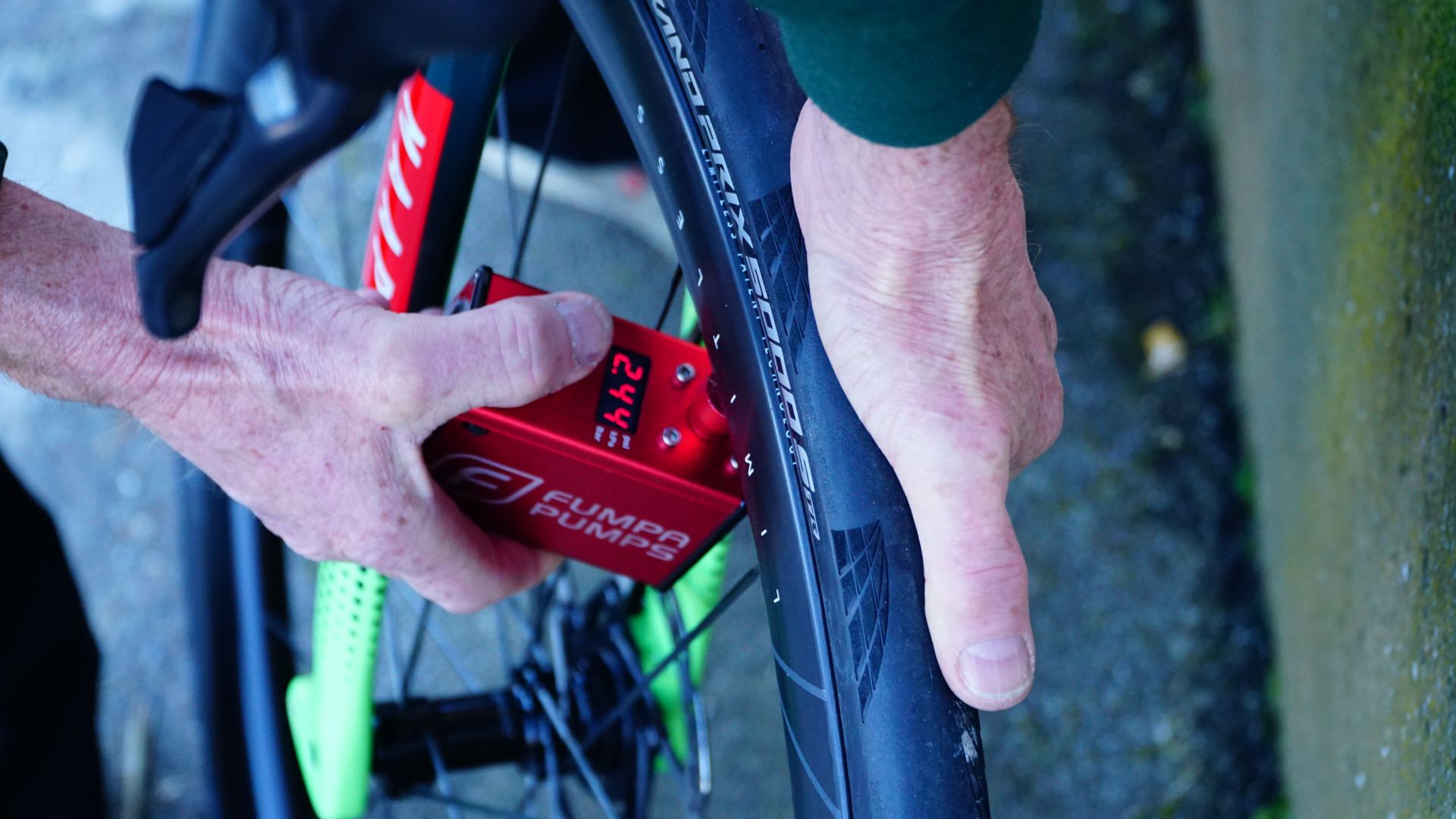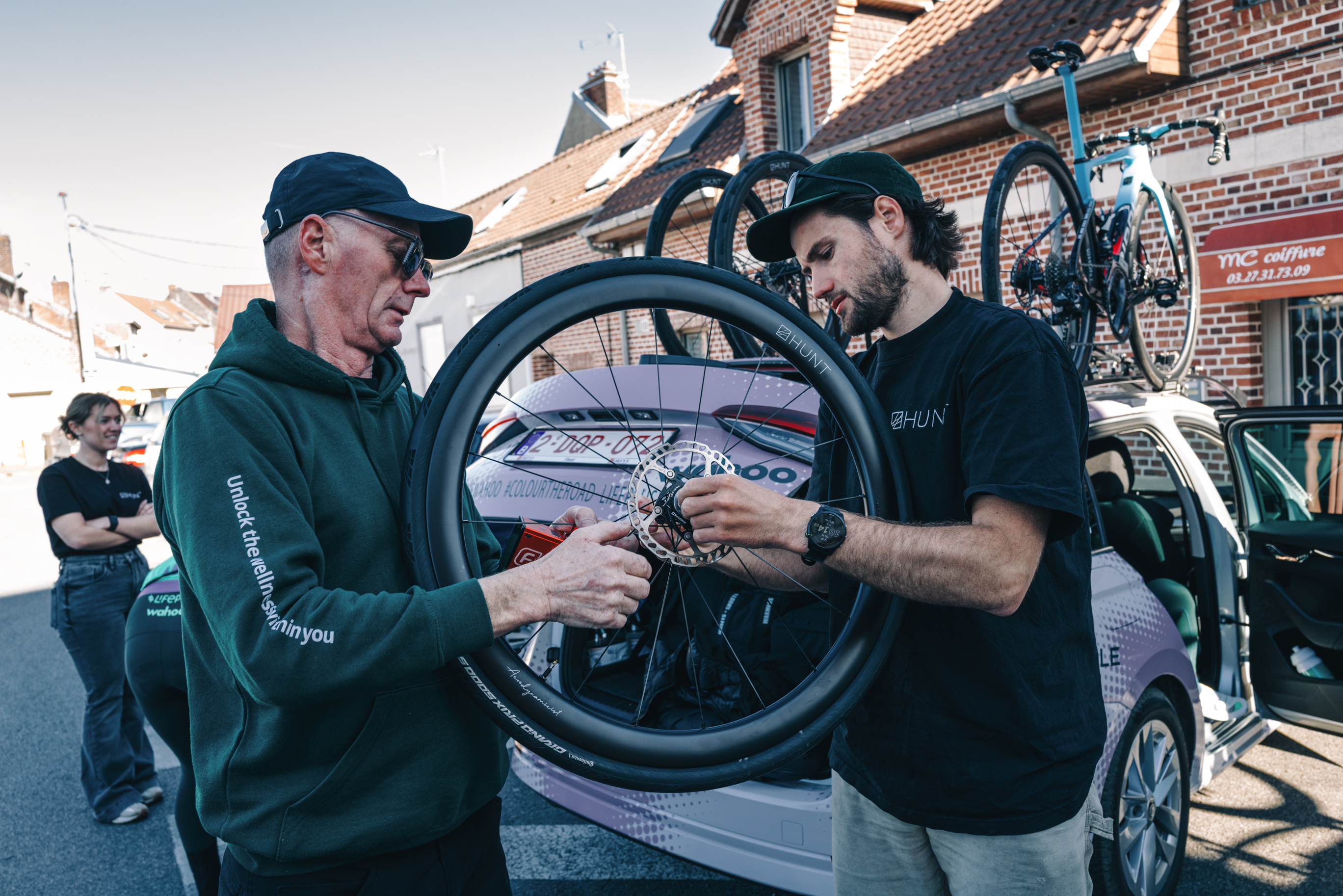
Riders at Paris-Roubaix this weekend will be running tyre pressures as low as, and perhaps even lower than, 37psi (2.5 bar).
The race, famous for its tough cobbled sectors, tends to bear witness to the lowest road race pressures of the year, as those competing look to balance comfort and speed.
Cycling Weekly recently joined British women's Continental team Lifeplus-Wahoo and their wheel supplier Hunt on a recon of the race route. There, the team's smallest rider settled on a tyre pressure of 37psi for race day.
"It's always astounding how low they need to go and quite how bad the cobbles are," said Hunt design engineer Paddy Brown. "We always thought we were going to be in the mid to high 30psi range, and that's where most of the riders ended up."
During the recon, Lifeplus-Wahoo rode 32mm tubeless tyres on hookless rims. A trend of wider tyres has become more prevalent at Roubaix over the last few editions. Speaking to Rouleur on Wednesday, former race winner John Degenkolb explained that he sized up to 32mm in 2023, having generally run 30mm in the past.
An increase in tyre width goes hand in hand with lower pressures. "You used to see riders on 23mm tyres, whereas now everyone's on 32mm," Brown explained. "With that tyre volume, you can reduce the tyre pressure further without sacrificing too much rolling resistance from the road as well.
"If the pressure is too high, you start to skip and bounce over the cobbles. You're going to really suffer, basically, and you're going to be a lot slower."

Riders will typically run different pressures in their front and rear tyres, with more air in the rear to support where their weight is.
"It's about trying to keep that centre of mass smooth," said Brown. "It basically means that, rather than the whole rider's mass being lifted up to get over that cobble, the tyre can just deform over it. You don't have to travel a zigzag path with your centre of mass, your centre of mass can just steamroll straight over the cobbles."
As women tend to be lighter than men, female riders can afford to run lower tyre pressures. In the team paddock at the men's race last year, mechanics were secretive about their choices, although the general consensus was a range of around 50psi (3.5 bar) to 65psi (4.5 bar).
This Saturday, Lifeplus-Wahoo sprinter El King plans to run 37psi (2.6 bar) in her front tyre, and 40psi (2.8 bar) at the rear. This set-up, she explained, is "substantially lower" than what she uses for the rest of the season.
"It's that balance between having enough for the tarmac sectors and making the difference on the cobbles," King said. "With thicker tyres, it makes a big difference. And with 30km of cobbles in the last 90km, it's a case of getting that balance right."
At the recent Nokere Koerse, a race held over cobbles in Belgium, King raced on pressures of 50psi (3.6) and 54psi (3.7 bar). Does she notice an increased rolling resistance when she's on the tarmac? "I don't personally, but you could whack my saddle up 5mm and I would also not realise," she laughed.







